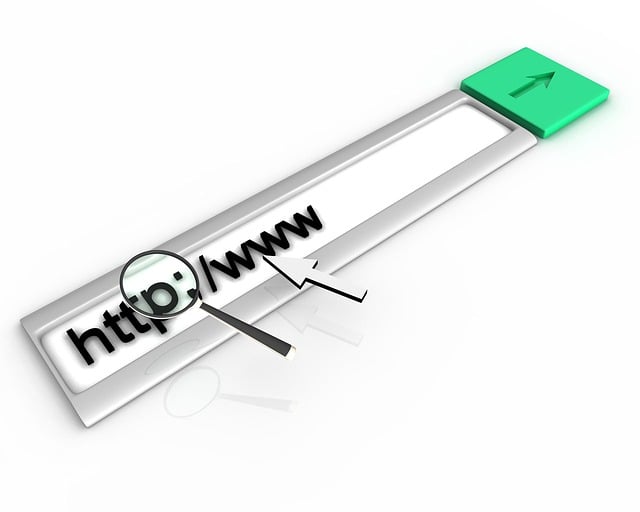This post will show you the top 6 hacks to secure your eCommerce site against cyber threats.
ECommerce sites are a lucrative source of personal and financial data for potential attackers. The impact on eCommerce businesses can be devastating. Following a significant breach, 60% of companies tend to close down within six months.
The cost of breaches is so overwhelming in terms of recovery fines, damages, and penalties that it’s imperative for business owners now to pay attention to shoring up the security of their sites.
More importantly, a dent in customer trust in the case of an attack can also cause long-term damage to your reputation. In a recent survey, 87% of customers indicated they are likely to change where they shop if the company cannot handle their data responsibly.
Many businesses (especially eCommerce) tend to fall into the trap of over-valuing website functionality over cybersecurity, leaving them wide open for attacks. Many SMBs also lack the necessary capital to shore up their digital security and can easily fall prey to attackers.
Given the over-reliance of their business on their websites, any security breach can significantly impact the entire business, reducing its chances of maintaining business continuity. For more information on cyber-attack prevention, consider contacting a reputable eCommerce Marketing Agency.
READ ALSO: 3 Easy Steps To Boost Security For Your eCommerce Business
However, eCommerce business owners are aware of their responsibility to protect their and their consumers’ data and are trying to cope. According to the VMWare Carbon Black 2020 Cybersecurity Outlook Report, 77% of businesses bought new security products within the last year, and 69% had invested in engaging security staff.
With government and legal standards being enforced more regularly, most businesses are now striving to meet established levels of security compliance, such as the Payment Card Industry Data Security Standard (PCI DSS).
This article will explore the Top 6 Hacks to Keep your eCommerce Site Secure Against Cyber Threats.
Table of Contents
What Is eCommerce Security?
Cyberattacks have reached a new high in the wake of the pandemic, and people are increasingly relying on digital systems.
They have increased in volume and the degree of technical sophistication involved in the attacks. eCommerce sites happen to be a high-value target for attackers.
eCommerce security thus indicates the measures that eCommerce businesses can take to defend their data and their customers’ data and privacy from attacks.
Kinds Of Attacks Targeted Against eCommerce Sites
Many kinds of attacks can be targeted at eCommerce sites, but the majority of these attacks can be divided into:
Distributed Denial of Service (DDoS)
A DDoS attack is an intentional disruption of traffic (server, service, or network) by drowning it in a flood of traffic that can prevent your legitimate customers and partners from accessing your site.
READ ALSO: 5 Ways To Improve The Security Of Your Magento eCommerce Store
Malware and ransomware
“Malicious software” (malware) is a type of software that attackers try to install on victims’ systems.
Ransomware refers to a specific type of malware that can hijack the victims’ system until the attackers receive the ransom they ask for.
There are a few telltale signs when your system becomes infected by malware:
- Links that are supposed to take you to a set destination redirect you elsewhere.
- You receive new installs on your system that you didn’t authorize. These can include new toolbars, buttons in your browser, or new folders or icons on your system.
- Your browser becomes overloaded with numerous pop-ups, including but not limited to offensive advertisements.
- Your system becomes uncharacteristically slow or tends to crash frequently. Your browser can also become unresponsive or set your homepage to a destination you did not place.
- Your emails stop getting delivered.
Top 6 Hacks to Keep Your eCommerce Site Secure Against Cyber Threats
1. Check for Vulnerabilities
As stated above, every eCommerce company must comply with set industry-level security standards mandated by credit card companies. However, compliance does not guarantee the security of your whole eCommerce site.
To ensure holistic security, you must regularly scan your site for vulnerabilities and patch them as soon as they are identified. It is recommended that eCommerce business owners conduct regular VAPT to reduce the risk of vulnerabilities.
READ ALSO: The Pros And Cons Of Starting An eCommerce Business
2. Transport Layer Security (TLS), Secure Sockets Layer (SSL), and HTTPS authentication
SSL is the industry-established standard for safeguarding online transactions. The SSL certificate encrypts links between networked computers (users and the site) as well as in transit, and also authenticates the identity of users.
That way, even if the end-user system is vulnerable, your transaction and the website remain secure under the SSL cover.
For most buyers now, the padlock icon and ‘HTTPS’ present a symbol of assurance, allowing them to enter their personal and financial data on any eCommerce site.
Having an SSL certificate is essential for an ecommerce website. To combat cyber threats, consider various SSL options, such as standard SSL certificates, multi-domain wildcards, and others, that can meet the security requirements of an ecommerce business. However, other providers offer low-cost SSL certs to benefit every type of business.
3. PCI DSS Compliance
PCI DSS is another industry standard that ensures the secure transmission and storage of customer credit card information.
These standards are set down by the PCI Security Standards Council (PCI SSC) and mandated by credit card companies.
READ ALSO: eCommerce Design Trends
4. Multi-factor authentication (MFA), 2-factor authentication (2FA), or 2-step verification (2SV)
MFA, 2FA, and 2SV also guarantee additional layers of security for users. These ensure that, in addition to entering the required credentials to log into the site, all three methods require users to furnish another method of identity verification before they can log into your eCommerce store.
5. Brand Monitoring
Business owners need to realize that their brand is also a digital asset that attackers may try to exploit. You can utilize specialized tools to monitor for malicious use of brand assets.
It can also help you avoid trouble in the long run and shore up against phishing attacks and copyright violations. A local Facebook ad agency in Los Angeles can help you set up your brand monitoring initiative.
6. Educate your customers and employees
Customers and employees can be your most significant vulnerability or your most effective line of defense against cyberattacks. You can also employ the services of eCommerce Marketing Services to keep your security policies and training updated.
Keep your customers and employees informed on security best practices and encourage customers to change passwords regularly.
eCommerce Site Security: FAQs
What are the most common cyber threats to eCommerce websites?
- SQL injection attacks: Hackers inject malicious code into website forms to steal data from your database.
- Cross-site scripting (XSS) attacks: Hackers inject malicious scripts into your website to steal user data or redirect them to fraudulent websites.
- DDoS attacks: Hackers overwhelm your website with traffic, making it unavailable to legitimate users.
- Malware attacks: Hackers can infect your website with malware that steals customer data or redirects them to malicious websites.
What are the consequences of a cyberattack on an eCommerce website?
- Financial losses: You may incur significant losses due to stolen customer data, website downtime, and reputational damage.
- Legal repercussions: Depending on the nature of the attack and the data compromised, you may face legal consequences and regulatory fines.
- Loss of customer trust: A cyberattack can damage your reputation and erode customer trust, potentially leading to lost sales and business opportunities.
READ ALSO: The Retail Revolution: 10 Steps to a Seamless Ecommerce Transition
How can I stay compliant with data privacy regulations?
- Familiarize yourself with data privacy regulations, such as GDPR and CCPA, which may dictate how you collect, store, and use customer data.
- Implement appropriate data governance practices and ensure you have legal consent from users to collect and process their data.
What are some additional security measures I can consider to secure eCommerce site?
- Implement two-factor authentication (2FA): This adds an extra layer of security by requiring a secondary verification code when logging in, making it more difficult for unauthorized users to access accounts.
- Use a web application firewall (WAF): A WAF can help filter out malicious traffic and protect your website from common attacks.
- Offer secure payment options: Provide customers with secure payment options, such as PCI-compliant payment gateways, to protect their financial information during transactions.
Conclusion
By implementing these top hacks to secure your eCommerce site against cyber threats and addressing common concerns, you can significantly strengthen your eCommerce website’s security posture and create a safer shopping environment for your customers.
INTERESTING READS
- Best Antivirus For 2022
- Best VPN For 2022
- Top 5 Cybersecurity Threats That eCommerce Websites Should Watch Out For
- 5 Ways To Identify Phishing Or Fake Websites
- How to Set Up a New Computer
- 9 Proven Cybersecurity Tips For Startups
- 4 Common VPN Encryption Protocols Explained
- Cyber Threats: How To Secure Your Computer Against Cyber Threats
- Why SSL Certificate Is An Essential Cybersecurity Tool?
About the Author:
Christian Schmitz is a professional journalist and editor at SecureBlitz.com. He has a keen eye for the ever-changing cybersecurity industry and is passionate about spreading awareness of the industry's latest trends. Before joining SecureBlitz, Christian worked as a journalist for a local community newspaper in Nuremberg. Through his years of experience, Christian has developed a sharp eye for detail, an acute understanding of the cybersecurity industry, and an unwavering commitment to delivering accurate and up-to-date information.











